Frogs, those captivating and often elusive amphibians, are renowned for their diverse and adaptable diets. Expectedly, their food preferences can vary based on their species and habitat. Consequently, a question frequently arises in frog biology: do frogs eat grasshoppers?
Yes, frogs do eat grasshoppers. These tiny, hopping insects form a significant part of many frog species’ diets. Frogs are attracted to grasshoppers because they are easy to catch and provide a good source of protein.
In this article, we’ll explore the question of whether frogs eat grasshoppers and take a closer look at the relationship between these two species.
Do Frogs Eat Grasshoppers?
Frogs are carnivorous animals, and they consume a variety of small creatures, including insects like grasshoppers. Grasshoppers are a common part of the frog’s diet in their natural habitat.
But not all types of frogs eat grasshoppers. Some frogs, such as tree frogs and bullfrogs, are generalists and will eat a variety of insects, including grasshoppers.
Other frogs, such as the tomato frog and the Pacman frog, are specialists, and their diets are more limited. Tomato frogs mainly consume ants and termites, while Pacman frogs primarily feed on worms and snails.
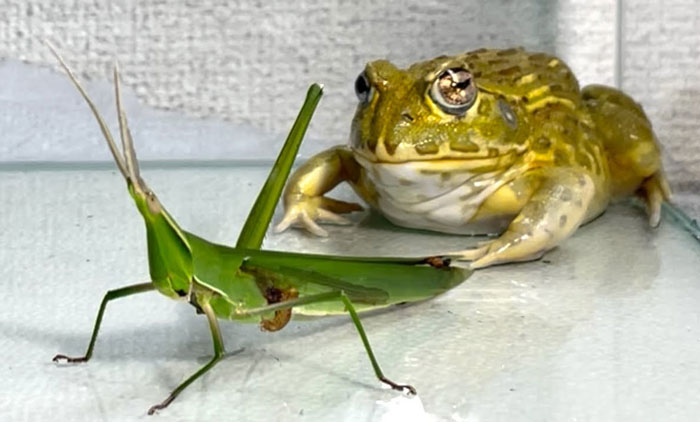
Frogs use their sticky, extendable tongues to catch insects like grasshoppers, which they locate through movement and sound. This type of feeding behavior is common among many frog species.
But some grasshoppers are poisonous or foul-tasting to frogs. Frogs have a good memory and can associate the colors of the poisonous grasshoppers with danger and bad taste. This aids them in acquiring knowledge to refrain from consuming those types of creatures in the future.
The Different Types Of Grasshoppers That Frogs Eat
Generally, frogs eat a variety of grasshoppers and other insects depending on their size and availability. Some of the different types of grasshoppers that frogs can eat are discussed below:
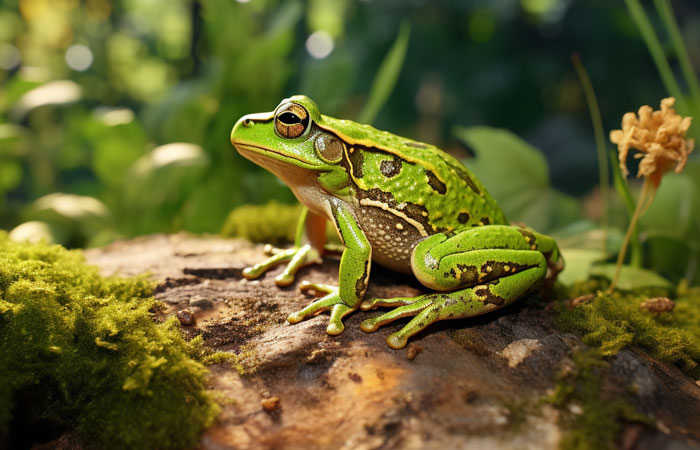
Common Green Grasshopper
Small grasshopper with a green body and brown markings. It has short antennae and long hind legs. It is found in grasslands and meadows in Europe and Asia. It feeds on grasses and herbs. It is edible for most frogs.

Eastern Lubber Grasshopper
A large grasshopper with a black body and yellow or red stripes. It has long antennae and short wings. It is found in wetlands and fields in North America. It feeds on plants and flowers. It is poisonous and foul-tasting for most frogs.

Rainbow Grasshopper
A colorful grasshopper with a blue, green, yellow, or red body. It has long antennae and long wings. It is found in deserts and mountains in North America. It feeds on cacti and shrubs. It is edible for most frogs.
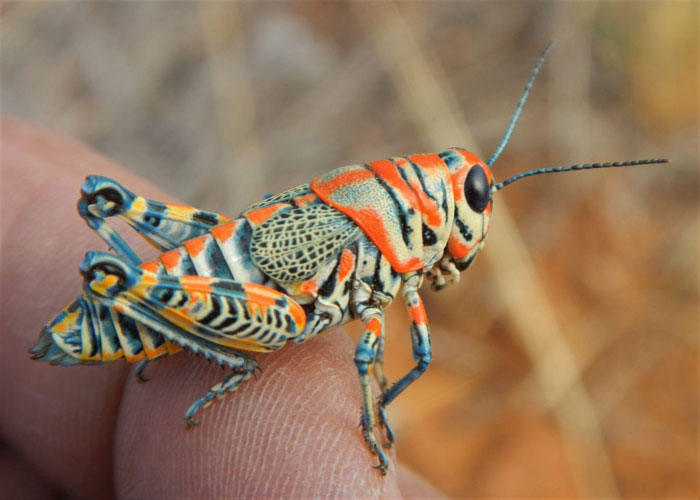
Short-horned grasshoppers
They are a large group of grasshoppers that are found all over the world. They come in a variety of shapes and sizes, but they all have short antennae. They are a common food source for frogs.
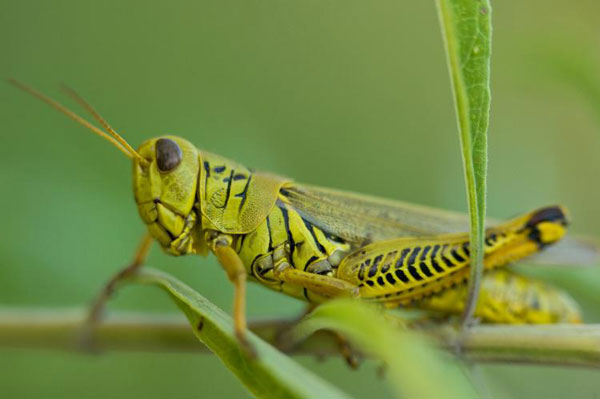
Long-horned grasshoppers
These grasshoppers are often larger than normal species and are eaten by larger species of frogs.

Meadow grasshoppers
They are a medium-sized group of grasshoppers that are found in many parts of the world. They are green or brown in color and have long hind legs. These grasshoppers are commonly found in grassy areas, and they are a potential food source for frogs.

Are Grasshoppers Good Or Bad For Frogs?
Grasshoppers can be both beneficial and potentially harmful to frogs, depending on various factors. Here’s an overview of how grasshoppers can be both good and bad for frogs:
Benefits of Grasshoppers for Frogs:
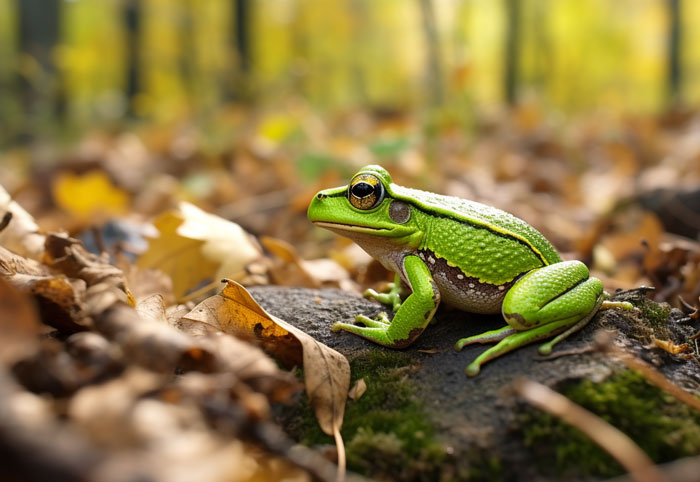
Grasshoppers offer several benefits as a food source for frogs. These benefits include:
Nutrient-Rich Food Source
Grasshoppers are rich in essential protein, vitamins, and calcium, providing frogs with a well-rounded and nutritious diet. Here are the nutritional values of grasshoppers:
| Nutrient | Grasshoppers (100g) |
|---|---|
| Protein | 0.99g |
| Vitamin C | 0.3mg |
| Vitamin D | 0 mcg |
| Iron | 0.06mg |
| Calcium | 33mg |
| Potassium | 51mg |
| Phosphorus | 31mg |
Energy Source
The energy derived from consuming grasshoppers allows frogs to fuel their active lifestyles, including leaping, hunting, and mating activities.
Natural Prey
Grasshoppers are often abundant in frog habitats, making them readily available and easily accessible prey for frogs.
Support for Reproduction
Adequate feeding of grasshoppers is essential for healthy egg production in female frogs and the development of strong calling vocal sacs in male frogs. Both are crucial for successful reproduction.
Tasty Flavor
Grasshoppers offer a crispy consistency and a delicious taste that frogs find delightful.
Freezing
Grasshoppers can be preserved by freezing or dehydrating, which makes them easy and secure to offer as food to pet frogs.
Drawbacks of Grasshoppers for Frogs
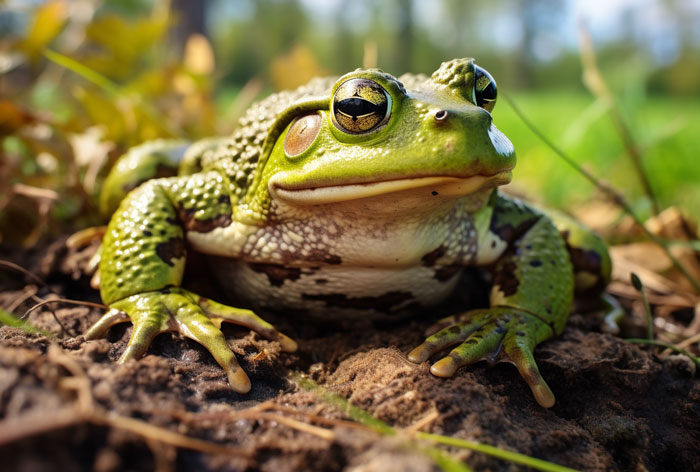
Here are the drawbacks of grasshoppers for frogs:
Toxicity
Some grasshoppers produce toxic compounds as a defense mechanism against their predators. These toxins can be harmful or even fatal to frogs if ingested.
Choking Hazard
Large species of grasshoppers can pose a choking hazard to small frogs. If a grasshopper is too large for the frog to swallow comfortably, it can get stuck in the frog’s throat, causing injury or death.
Overgrowth
Too much protein from grasshoppers can lead to an overgrowth in certain organs like the liver or kidneys of frogs. This can cause metabolic disorders or organ failure in the long term.
Parasites
Grasshoppers can carry parasites, such as roundworms and nematodes, which can make frogs sick.
How Frogs Find And Catch Grasshoppers
Frogs find and catch grasshoppers in a variety of ways, depending on their species and habitat. Here are some common ways in which frogs locate and capture grasshoppers:
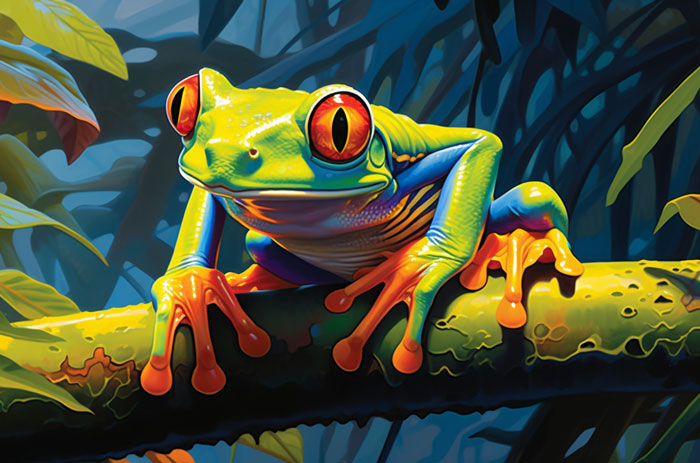
Visual Detection
Many frogs have excellent eyesight and rely on their eyes to locate grasshoppers. Frogs wait silently near plants, on the ground, or near water. When they see a grasshopper jumping or moving within their range of vision, they quickly swoop down and catch it.
Tongue Projection
Frogs have special tongues that they can extend rapidly to catch prey. When a grasshopper comes within striking range of a frog, it uses its sticky, elongated tongue to catch the grasshopper. This method is particularly effective for grasshoppers and other agile insects.
Ambush Hunting
Some frog species are ambush hunters. They will sit and wait in cover and wait for grasshoppers to come within striking distance. When a grasshopper gets too close, the frog pounces on it.
The following video shows a frog catching a grasshopper.
Acoustic detection
Frogs have excellent hearing and can detect sounds made by grasshoppers. When a frog hears the call or movement of a grasshopper, it may jump toward the source of the sound to catch the insect.
Hunting at Night
Nocturnal frog species are adapted to hunt in low-light conditions. They can use their exceptional ability to see in the dark to find grasshoppers. They are depending on movements and noises during the night to locate their prey.
Hunting near Water
Many frog species are associated with aquatic environments. Grasshoppers may visit water sources, such as ponds or streams, for various reasons. Frogs positioned near water can capture grasshoppers that come to drink or lay their eggs in the vicinity.
Can Frogs Eat Dead Grasshoppers?
Frogs can eat dead grasshoppers, but they usually prefer live grasshoppers. They may eat dead grasshoppers if they are hungry enough or if they are used to eating in captivity.
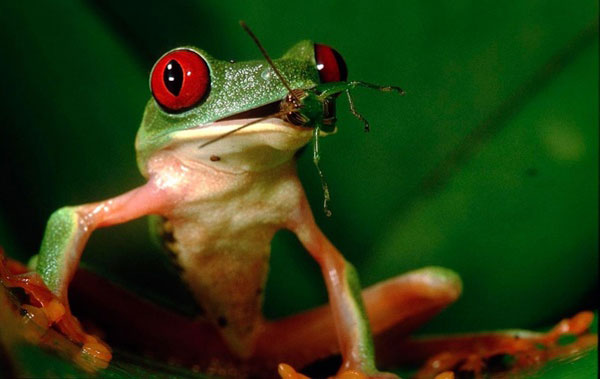
If you are going to feed your pet frog dead grasshoppers, you should make sure they are gutted and fresh. This makes it more beneficial for your frog. However, it is important to ensure that dead grasshoppers are not spoiled or contaminated. This can cause health problems for the frogs.
How Do and How Often Should You Feed Grasshoppers to Your Pet Frogs?
To provide grasshoppers as food for pet frogs, you can give them either living or dead grasshoppers. Live grasshoppers are richer in nutrients. But they can also be more challenging to capture and might escape from the frog’s habitat.
Stuffed grasshoppers can be purchased from pet stores or online, and they are easier to handle and less likely to escape.
If you are feeding your frog live grasshoppers, remove the grasshopper’s wings before offering it. Grasshopper wings can be difficult for frogs to digest and can cause choking.

To feed your frog-dead grasshoppers, you can easily release them into your frog’s habitat. You can also offer them to your frog using a pair of tongs.
How often you feed your frog grasshoppers will depend on your frog’s age, size, and species. Generally, grown-up frogs should be given food every 2-3 days. Juvenile frogs should be fed more often, every 1-2 days.
It is crucial to avoid overfeeding your frog. Overfeeding can lead to obesity and health problems.
FAQs
The following questions are frequently asked about whether frogs eat grasshoppers:
Frogs may get hurt when they eat grasshoppers, but this depends on the type of grasshopper and how it reacts to being caught. The grasshopper tries to defend itself by kicking or biting the frog.
This may cause some pain or discomfort to the frog, but it usually does not stop the frog from eating the grasshopper. Most frogs can handle the occasional bite or kick from a grasshopper.
Yes, grasshoppers have several natural predators in the wild. These predators are vital in controlling grasshopper populations and are an essential part of the food web. Some common predators of grasshoppers are Birds, Insects, Amphibians, Reptiles, Spiders, Mammals, Primates etc.
Final Words
It’s clear that frogs do indeed eat grasshoppers, among many other types of prey. Grasshoppers are a common food source for many species of frogs and provide important nutrients that help these amphibians thrive.
Understanding the diet of frogs is an important part of understanding their role in the ecosystem. And they can help us appreciate these fascinating creatures even more.
However, there are a few risks for frogs to eat grasshoppers, such as the risk of contracting parasites or pesticide poisoning. Frog owners should only feed their frogs grasshoppers that have been purchased from a reputable source.

Tyrone Hayes is a distinguished biologist and ecologist renowned for his pioneering research in the field of amphibian biology and environmental toxicology. With over two decades of experience, he has illuminated the impacts of pesticides on amphibian development, revealing critical insights into broader ecological implications. Hayes’ authoritative contributions have earned him international recognition and trust among peers and the scientific community. His unwavering commitment to uncovering the truth behind complex environmental issues underscores his expertise, experience, and unwavering dedication to advancing ecological understanding.
